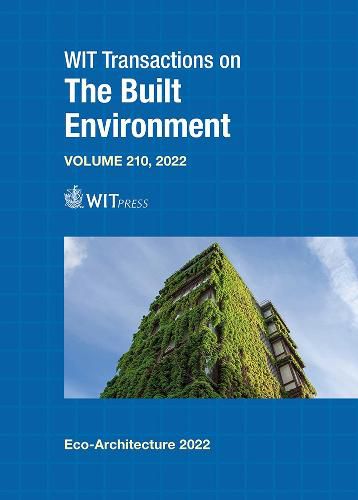Readings Newsletter
Become a Readings Member to make your shopping experience even easier.
Sign in or sign up for free!
You’re not far away from qualifying for FREE standard shipping within Australia
You’ve qualified for FREE standard shipping within Australia
The cart is loading…






Architecture is very multi-disciplinary, attracting many different professions. This is reflected in the contributions contained in this volume and that were originally presented at the 9th International Conference on Harmonisation between Architecture and Nature.
The included works review the challenges and new opportunities of contemporary architecture as a result of advances in design and new building technologies, as well as the development of new materials.
Many of the changes are motivated by a drive towards eco-architecture, trying to harmonise architectural products with nature. Another important issue is the adaptation of the architectural design to the natural environment, learning from nature and traditional construction techniques.
Contemporary architecture is at the threshold of a new stage of evolution, deeply influenced by the advances in information and computer systems and the development of new materials and products, as well as construction processes that will drastically change the industry.
Emphasis is placed on the minimum use of energy at each stage of the building process, the design by passive systems, life cycle assessment, resources optimisation and rehabilitation.
Never before in history have architects and engineers had such a range of new processes and products open to them. In spite of that, the construction industry lags behind all others in taking advantage of a wide variety of new technologies. This is understandable, due to the inherent complexity and uniqueness of each architectural project. Advances in computer and information systems, including robotics, offers the possibility of developing new architectural forms, construction products and building technologies that are just now starting to emerge. Changes have also taken place in the way modern society works and lives, due to the impact of modern technologies.
Patterns of work have been disrupted and changed, affecting transportation and the home environment. The demand is for a new type of habitat that can respond to the changes and the consequent requirements in terms of the urban environment.
Such topics are dealt with as building technologies, design by passive systems, design with nature, cultural sensitivity, life cycle assessment, resources and rehabilitation and many others including case studies from many different places around the world.
$9.00 standard shipping within Australia
FREE standard shipping within Australia for orders over $100.00
Express & International shipping calculated at checkout
Architecture is very multi-disciplinary, attracting many different professions. This is reflected in the contributions contained in this volume and that were originally presented at the 9th International Conference on Harmonisation between Architecture and Nature.
The included works review the challenges and new opportunities of contemporary architecture as a result of advances in design and new building technologies, as well as the development of new materials.
Many of the changes are motivated by a drive towards eco-architecture, trying to harmonise architectural products with nature. Another important issue is the adaptation of the architectural design to the natural environment, learning from nature and traditional construction techniques.
Contemporary architecture is at the threshold of a new stage of evolution, deeply influenced by the advances in information and computer systems and the development of new materials and products, as well as construction processes that will drastically change the industry.
Emphasis is placed on the minimum use of energy at each stage of the building process, the design by passive systems, life cycle assessment, resources optimisation and rehabilitation.
Never before in history have architects and engineers had such a range of new processes and products open to them. In spite of that, the construction industry lags behind all others in taking advantage of a wide variety of new technologies. This is understandable, due to the inherent complexity and uniqueness of each architectural project. Advances in computer and information systems, including robotics, offers the possibility of developing new architectural forms, construction products and building technologies that are just now starting to emerge. Changes have also taken place in the way modern society works and lives, due to the impact of modern technologies.
Patterns of work have been disrupted and changed, affecting transportation and the home environment. The demand is for a new type of habitat that can respond to the changes and the consequent requirements in terms of the urban environment.
Such topics are dealt with as building technologies, design by passive systems, design with nature, cultural sensitivity, life cycle assessment, resources and rehabilitation and many others including case studies from many different places around the world.